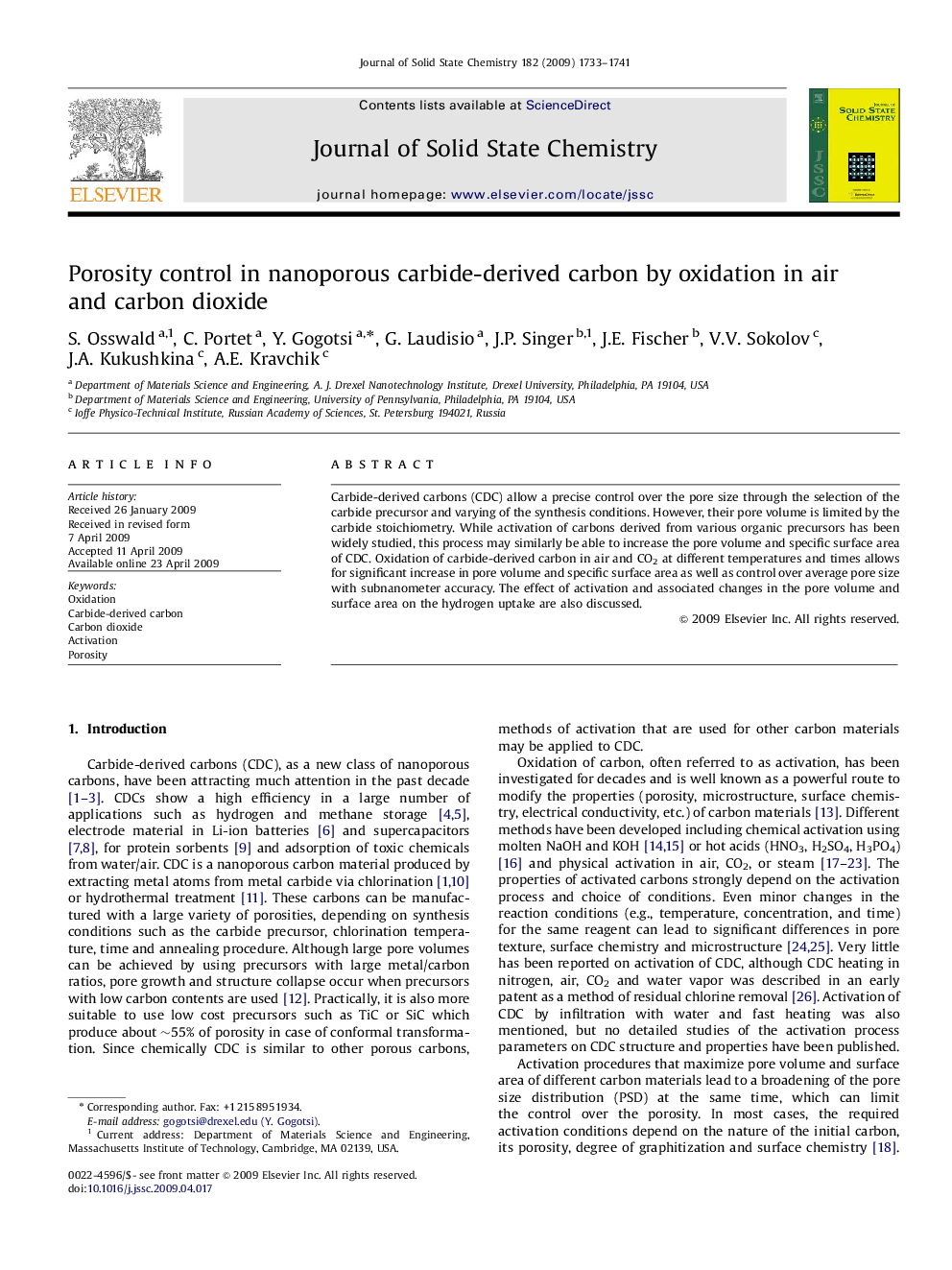| Article ID | Journal | Published Year | Pages | File Type |
|---|---|---|---|---|
| 1329240 | Journal of Solid State Chemistry | 2009 | 9 Pages |
Carbide-derived carbons (CDC) allow a precise control over the pore size through the selection of the carbide precursor and varying of the synthesis conditions. However, their pore volume is limited by the carbide stoichiometry. While activation of carbons derived from various organic precursors has been widely studied, this process may similarly be able to increase the pore volume and specific surface area of CDC. Oxidation of carbide-derived carbon in air and CO2 at different temperatures and times allows for significant increase in pore volume and specific surface area as well as control over average pore size with subnanometer accuracy. The effect of activation and associated changes in the pore volume and surface area on the hydrogen uptake are also discussed.
Graphical abstractCarbide-derived carbons (CDC) provide great potential for sorption of toxicants and gas storage applications. Activation of CDC in air and CO2 at different temperatures and times is applied in order to maximize pore volume and specific surface area, and control the average pore size with subnanometer accuracy.Figure optionsDownload full-size imageDownload as PowerPoint slide
